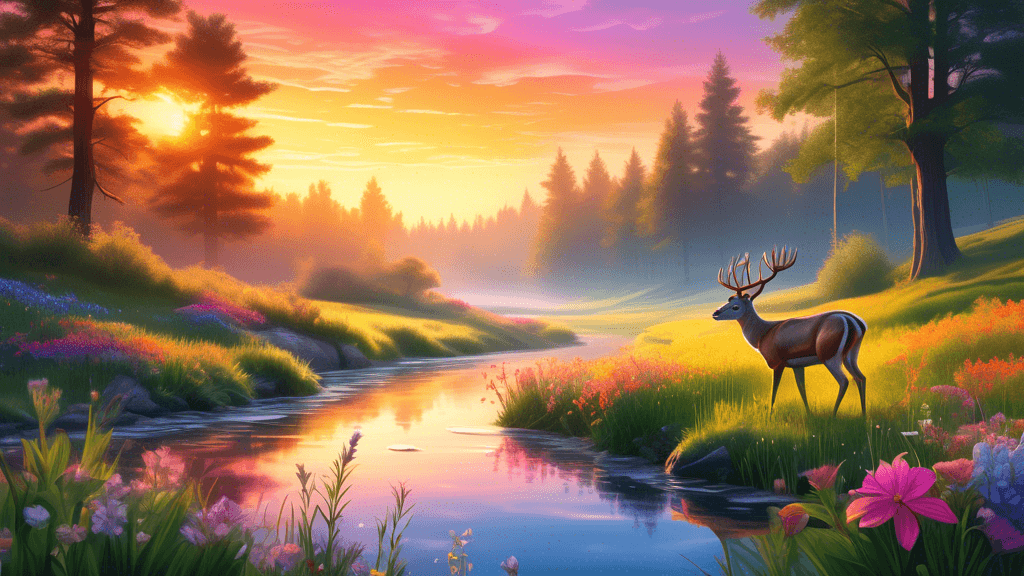
Capturing Nature: Integrating Wildlife into Landscape Photography
Share
Understanding the Fusion of Wildlife and Landscape Photography
Integrating wildlife into landscape photography not only enhances the visual appeal of an image but also helps in telling a more compelling story about the ecosystem. This integration requires a deep understanding of both wildlife behavior and landscape compositions. But who exactly benefits from this blend of photography? Nature enthusiasts, wildlife lovers, professional photographers, and conservationists all find value in the rich tapestry that this style of photography weaves.
Why Should Wildlife Be a Part of Landscape Photography?
Photography is the story I fail to put into words. - Destin Sparks. This quote beautifully sums up the challenge and charm of landscape photography. Why just capture the silence of the hills or the passive beauty of a lake when you can immortalize the vibrant bark of a deer in the distance? Including animals in landscape photos can:
- Bring vitality and a dynamic element to a photograph
- Highlight the ecological balance of the landscape
- Offer a glimpse into the natural behavior of animals within their habitat
- Support conservation efforts by showcasing the biodiversity of a region
How to Successfully Integrate Wildlife into Your Landscapes
The key to successfully capturing wildlife within the context of a landscape lies in preparation, patience, and respect for nature. Here’s how you can improve your approach:
1. Understand Animal Behavior
Studying the patterns of potential wildlife subjects is crucial. Knowing when certain animals are active and understanding their behavioral patterns during different seasons can significantly increase your chances of capturing them naturally within their environment. Dr. Jane Goodall's immersive approach to studying chimpanzees underscores the importance of patience and immersion, as she noted, Only when we understand can we care. Only if we care will we help. Only if we help shall all be saved.
2. Master the Light
Lighting plays a pivotal role in photography. Early morning or later in the afternoon, known as the golden hours, provides soft natural lighting that can enhance the aesthetic quality of your photo and simultaneously illuminate the wildlife, revealing intricate details that may not be visible otherwise.
3. Compose with Purpose
Understanding the rule of thirds in photography can dramatically improve how elements within a frame interact. By positioning the wildlife off-center, you can create a more intriguing interaction between the subject and its environment, guiding the viewer’s eye through the scene. For instance, a lone bison grazing under a vast sky tells a story of solitude and wilderness.
4. Use the Right Gear
Choosing the appropriate lens is essential. A telephoto lens is often ideal as it allows you to maintain a respectful distance from wildlife whilst capturing the expansive beauty of their habitat. Camera settings such as a faster shutter speed can help freeze motion, while a higher ISO may be necessary in lower light conditions.
5. Practice Ethical Photography
Respecting the wildlife and their habitat should always be a photographer’s priority. This means maintaining a proper distance, using natural light as much as possible, and avoiding actions that could stress or endanger the animals. Conservationist and photographer, Michael Sammut, points out, Our primary role as photographers is to observe and preserve, never to harm or disrupt.
Pushing Boundaries in Nature Conservation
Integrating wildlife into landscape photography does not only push artistic boundaries but also plays a crucial role in conservation. Through powerful imagery, photographers have the potential to impact public perception and foster greater appreciation of our natural world, thereby promoting conservation efforts. Each photograph serves as a record of the planet’s diverse ecosystems and underscores the intrinsic value of preserving them.
Conclusion
The integration of wildlife into landscape photography is more than just a photographic technique; it is a powerful medium for storytelling and environmental advocacy. By understanding animal behavior, mastering lighting and composition, using appropriate gear, and adhering to ethical practices, photographers can create impactful images that might just help save our planet.
Are You Ready to Capture the Wilderness?
As we move forward, let us all aspire to not only capture the beauty of nature but to do so with the care and respect it deserves. The Earth has given us spectacular moments to witness and cherish. Are you ready to capture them with your camera and make a difference?





